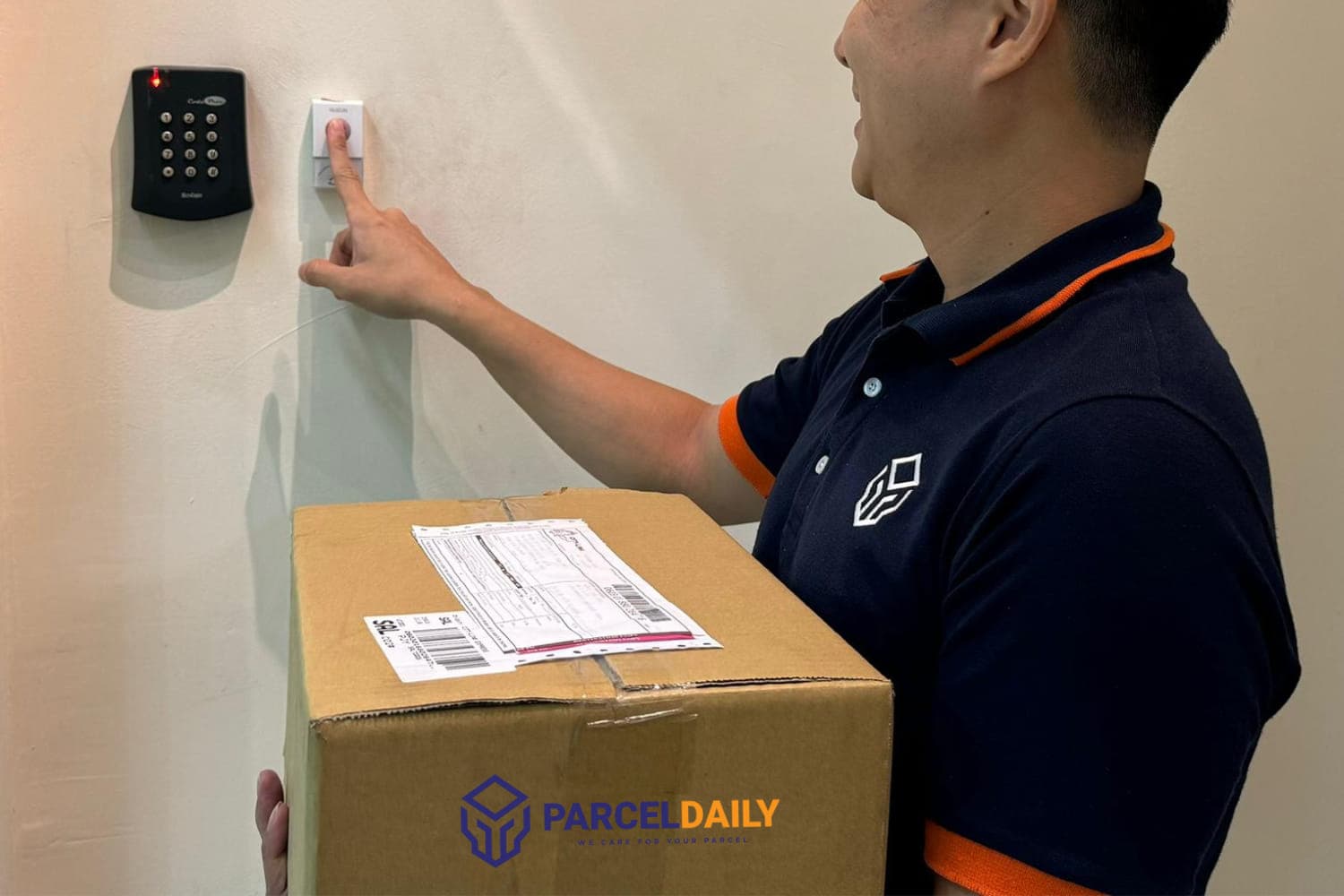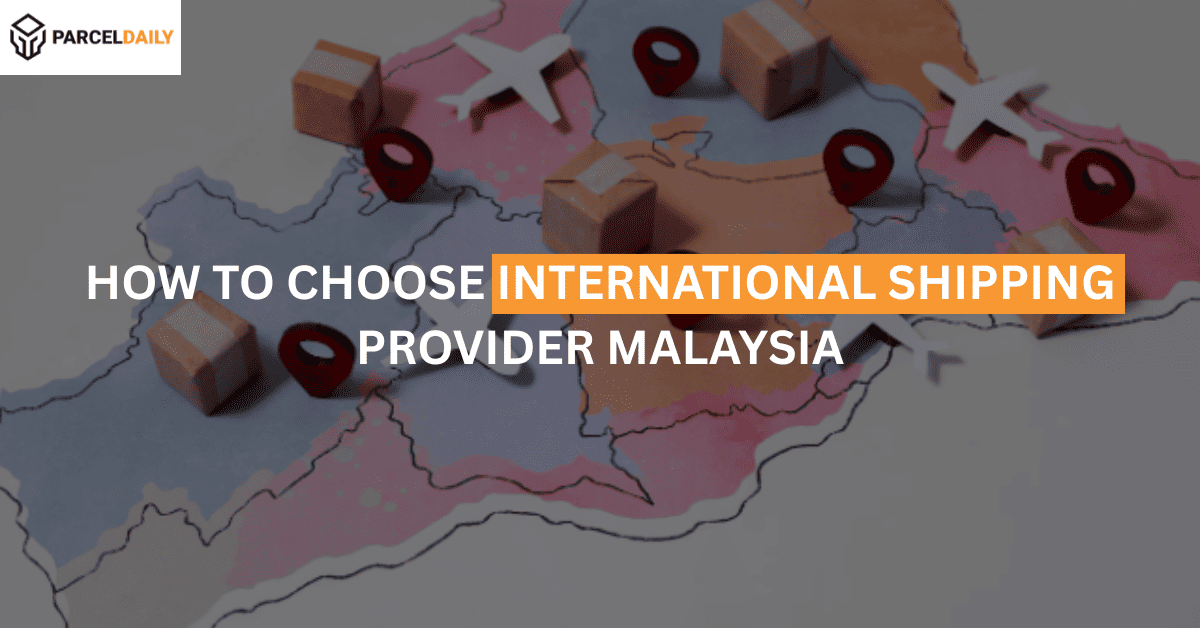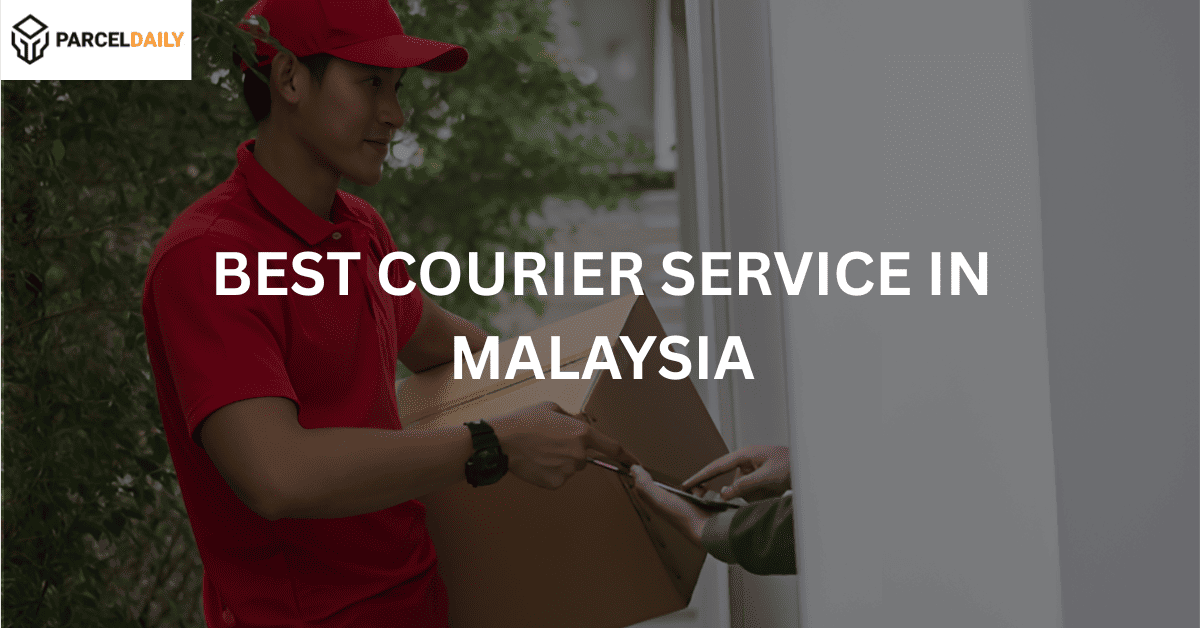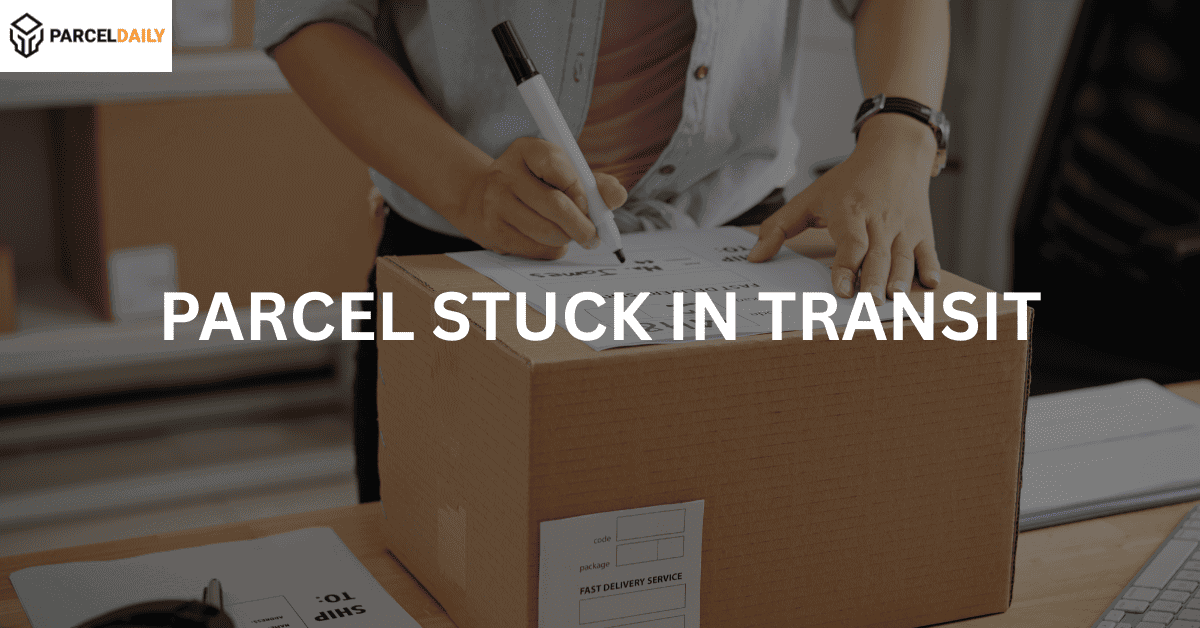Cash on Delivery (COD) is a payment method where customers pay only when they receive their parcel. Even in 2025, it still remains a popular choice in Malaysia, especially for online purchases made via eCommerce platforms and social commerce channels.
COD offers reassurance for customers who prefer to inspect their items before payment or who do not use credit cards or e-wallets. For many shoppers, paying only after receiving the item still feels safer and more familiar than clicking ‘Pay Now.’
This blog explores how COD works, who still uses it, what businesses should consider, and how it compares with other payment methods when it comes to courier services.
Comparison Table: COD vs Other Payment Methods in Malaysia (2025)
| Payment Method | Ideal For | Speed of Payment | Risk to Seller | Buyer Trust Level | Notes |
| Cash on Delivery | Non-digital users, cautious buyers | At delivery | High | High | Still widely used in Tier 2/3 cities or older folks |
| Online Banking | Digitally savvy consumers | Instant | Low | High | FPX integration standard |
| Credit/Debit Cards | Urban buyers | Instant | Low | High | Popular for higher ticket items |
| E-Wallets (TNG, Boost) | Gen Z, promo-seekers | Instant | Low | Medium-High | Popular in Klang Valley |
| Buy Now Pay Later | Budget-stretching buyers | Scheduled | Medium | Medium | Growing with SPayLater, Atome |
How Does COD Work in Malaysia Today?
Cash on Delivery payments are usually made when the parcel arrives, either in cash or by scanning a DuitNow QR code. Here’s how the full process works for both buyers and sellers:
1. Buyer Places Order with COD Selected
Whether shopping on Shopee, Lazada, TikTok Shop, or via WhatsApp sellers, the buyer selects Cash on Delivery during checkout.
This flags the order for COD handling in the courier’s system.
2. Seller Books Delivery & Enters COD Amount
The seller books the shipment through platforms like ParcelDaily or directly via courier dashboards.
The COD amount is entered manually and linked to the parcel’s tracking ID, this is what the courier will collect.
3. Courier Delivers & Collects Payment
The rider contacts the buyer before arriving. Payment is collected at the door, either by:
- Cash
- QR code such as DuitNow or e-wallet apps
Note: Some couriers enforce QR-only for orders over RM250 to reduce handling risk.
4. Courier Confirms Payment via App
Once the buyer pays, the rider logs the payment in real time via mobile app or POS scanner. This triggers a “payment received” status update in the merchant dashboard.
5. Seller Gets Paid Via Bank Transfer (1–3 Days)
The COD funds are transferred to the seller’s registered bank account:
- Standard remittance: 1–3 business days
- Next-day remittance: Available from providers like ParcelDaily (if enabled)
- A COD dashboard tracks remittance by order, status, and amount.
Why Do Malaysians Still Use COD in 2025?
It’s undeniable that paying for a product after receiving it feels much better. While Malaysia is moving towards a cashless economy, COD remains relevant for:
- Older buyers not using online banking or e-wallets
- Rural and semi-urban areas with limited payment coverage
- Buyers skeptical of scams or product quality
- First-time online buyers
“A survey by Statista (2024) found that 34% of Malaysian eCommerce buyers still prefer COD for non-essential or impulse purchases.”
What Are the Risks of Offering COD for Sellers?
Cash on Delivery adds friction, cost, and uncertainty to the order fulfilment process. While it may attract more orders, sellers must prepare for the operational trade-offs.
Higher Rejection and Return Rates
COD orders are more likely to be refused at the door. Buyers sometimes cancel mentally after ordering or simply don’t show up. This results in:
- Increased logistics costs from failed deliveries
- Restocking delays or lost inventory
- Wasted manpower and fuel for rerouting
Some sellers report up to 20% return rates on COD campaigns versus less than 5% for prepaid.
Cash Handling & Security Risks
Handling physical cash introduces risk for both couriers and merchants. From theft to miscounts or untraceable transactions, COD requires additional safeguards.
- Drivers may carry large amounts of cash on busy routes
- Businesses must rely on courier partners for secure reconciliation
- Delays in remittance may disrupt daily cash flow
Slower Payment Collection
COD disrupts cash flow by delaying when sellers get paid. Unlike prepaid methods (FPX, credit card, e-wallets), COD often requires a 1–3 day settlement window depending on the courier or platform.
This delay can affect:
- Inventory restocking cycles
- Marketing spend or ad reallocation
- Salary or overhead planning for small businesses
Administrative Overhead
Tracking COD payments takes more time and effort. It’s not just about waiting, sellers must also manage:
- Dashboard monitoring for daily remittance
- Matching bank receipts to specific orders
- Follow-ups for missing payments or failed deliveries
- Manual accounting entries if integration is limited
Despite these risks, many businesses still offer COD because it improves conversion rates, especially for first-time buyers, impulse purchases, and categories with lower trust (like cosmetics or wellness products).
With smart limits and courier policies, COD can still be a viable option in 2025. Just not without strategy.
Which Couriers Offer COD Services in Malaysia?
Most major and mid-tier courier services such as (Ninja Van) in Malaysia continue to support Cash on Delivery, but with tighter policies and smarter tech. While COD remains a standard offering, limits, surcharges, and QR collection are more common.
| Courier | COD Coverage | Notes |
| J&T Express | Nationwide (strong in Shopee/TikTok Shop) | QR collection supported; often used for eCom marketplaces |
| Ninja Van | Peninsular Malaysia + Sabah/Sarawak | Flexible delivery slots; real-time COD dashboard |
| Pos Laju | Nationwide (East Malaysia coverage strong) | Ideal for government, B2B, and rural COD |
| Flash Express | Nationwide (SME/social sellers) | Handles bulk COD orders for FB/IG businesses |
| City-Link Express | Semi-urban and regional centres | Used by SMEs with recurring local COD deliveries |
| Best Express | Expanding COD in Klang Valley + major towns | Offers integration with marketplaces and ParcelDaily |
| Lalamove | Klang Valley, Johor Bahru, Penang | On-demand COD for urgent, small-item deliveries |
Important COD Service Features to Check:
- DuitNow QR support at delivery (safer than cash)
- Automated remittance cycle (next-day vs standard)
- COD rejection handling or reattempt policies
- Dashboard access for remittance tracking
How Businesses Can Offer COD Safely in 2025
As mentioned prior, COD can still be effective, but only with the right safeguards in place.
When used with controls, Cash on Delivery can help expand reach and increase sales, especially in semi-urban markets and among first-time online buyers. To manage COD efficiently in 2025, businesses should:
- Cap order values: Limit COD purchases to RM200–RM250 to reduce loss from rejections.
- Use OTP or phone verification: Confirm buyer intent before shipping out high-risk orders.
- Encourage QR-based payments: Promote DuitNow QR or e-wallet options to avoid handling cash.
- Monitor COD performance: Track acceptance rates, courier delays, and settlement timelines by product or region.
“Yes, COD comes with more hassle, but it helps us get first-time customers who wouldn’t pay upfront. For us, the rejection rate is worth the trade-off.” Farah, Operations Lead, Beauty & Supplements Store in Kuantan
Retailers in categories like beauty, supplements, and tech accessories report 15–22% higher conversions when COD is enabled, especially for products below RM300.
Which Types of Businesses Should Offer COD?
The truth is some business types see better results with COD than others. Use these prompts to evaluate whether it fits your model:
- Selling to rural or Tier 2/3 cities? COD helps build trust with buyers unfamiliar with online payments.
- Low-ticket products? Risk of rejection is minimal and easily absorbed.
- Frequent returns or fragile items? Prepaid may be safer, COD increases delivery uncertainty.
- Working with smaller couriers? Ensure they support COD tracking and remittance dashboards.
Conclusion: COD in Malaysia Still Matters in 2025
While digital payments continue to rise, Cash on Delivery remains the preferred option for many shoppers, especially in suburban areas, rural towns, and among first-time online buyers.
At ParcelDaily, we understand that Cash on Delivery can be challenging, from tracking collections to delayed payouts, especially for eCommerce sellers and independent merchants.
That’s why we’ve built a COD system that’s more efficient, seller-friendly, and flexible enough to suit businesses of all sizes. Our services include:
- Next-Day Remittance: Get paid as early as the next business day after delivery
- COD Tracking Dashboard: Monitor collection status, remittance, and order reconciliation in real time
- Multiple Courier Integrations: Choose your preferred delivery partner without needing multiple accounts
- Built-In Risk Controls: Set COD caps, monitor rejection rates, and customise COD terms per parcel
By offering COD with the right structure and safeguards, businesses can:
- Boost conversions among cautious buyers
- Reach underserved locations with limited digital adoption
- Reduce cart abandonment from customers hesitant to pay upfront
COD isn’t outdated, it’s evolving. And at ParcelDaily, we’re here to make that parcel delivery service simple, secure, and profitable for every merchant.
Frequently Asked Questions About Cash on Delivery in Malaysia (2025)
What is COD payment in Malaysia?
COD (Cash on Delivery) lets buyers pay for items only after receiving them, typically in cash or via QR at the doorstep.
Why is COD still used in 2025?
Because it provides trust for buyers who worry about scams or prefer paying only after seeing the product.
Are COD orders safe for sellers?
With proper safeguards like OTP and value caps, COD can be a safe, conversion-friendly option.
Which platforms support COD in Malaysia?
Shopee, Lazada, TikTok Shop, and many WhatsApp/Facebook sellers still offer COD.
Can COD be cashless?
Yes. Most couriers now support DuitNow QR or e-wallet payments at delivery.
Is COD available nationwide in Malaysia?
Mostly yes, though some rural areas may have limited courier support or longer wait times.




